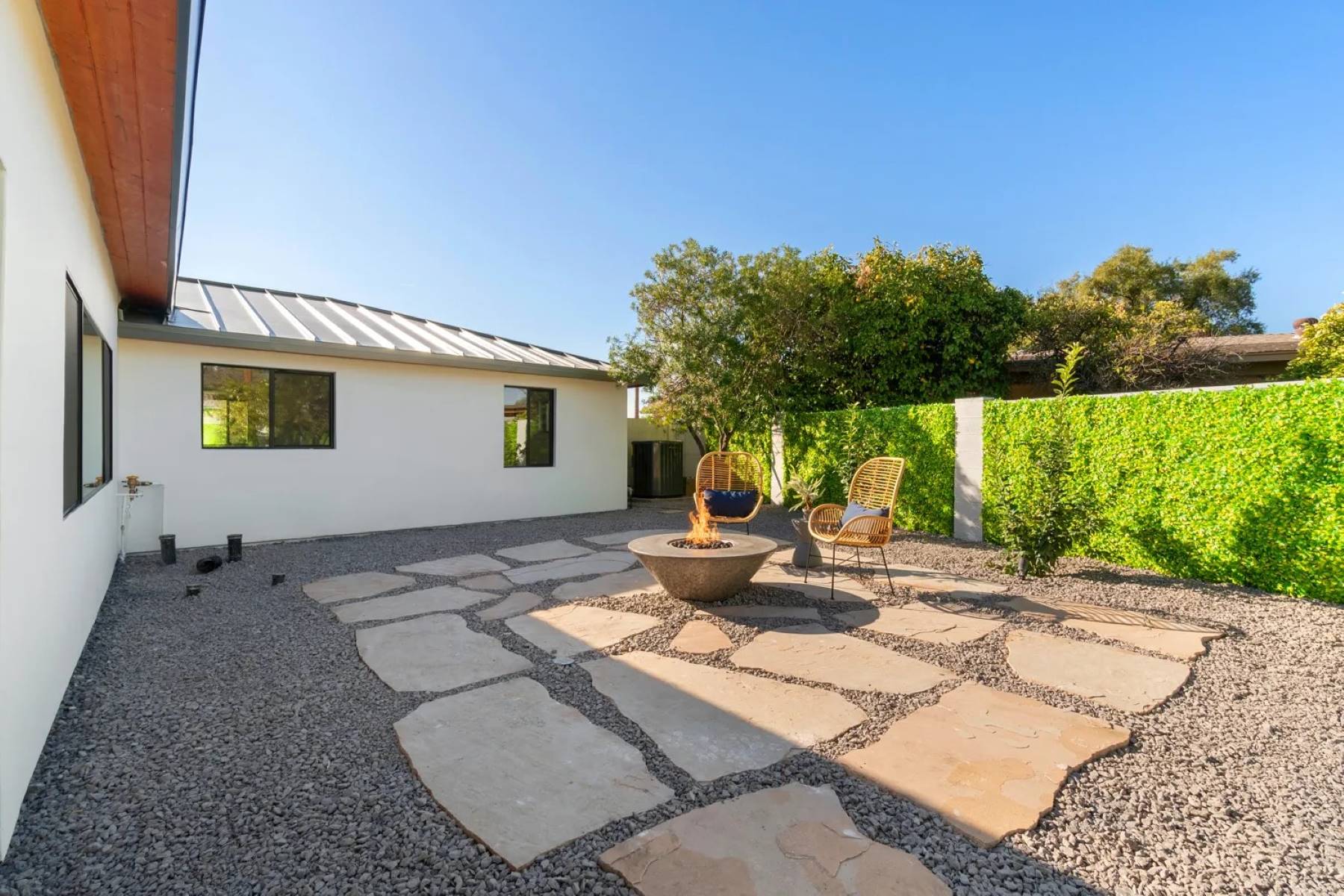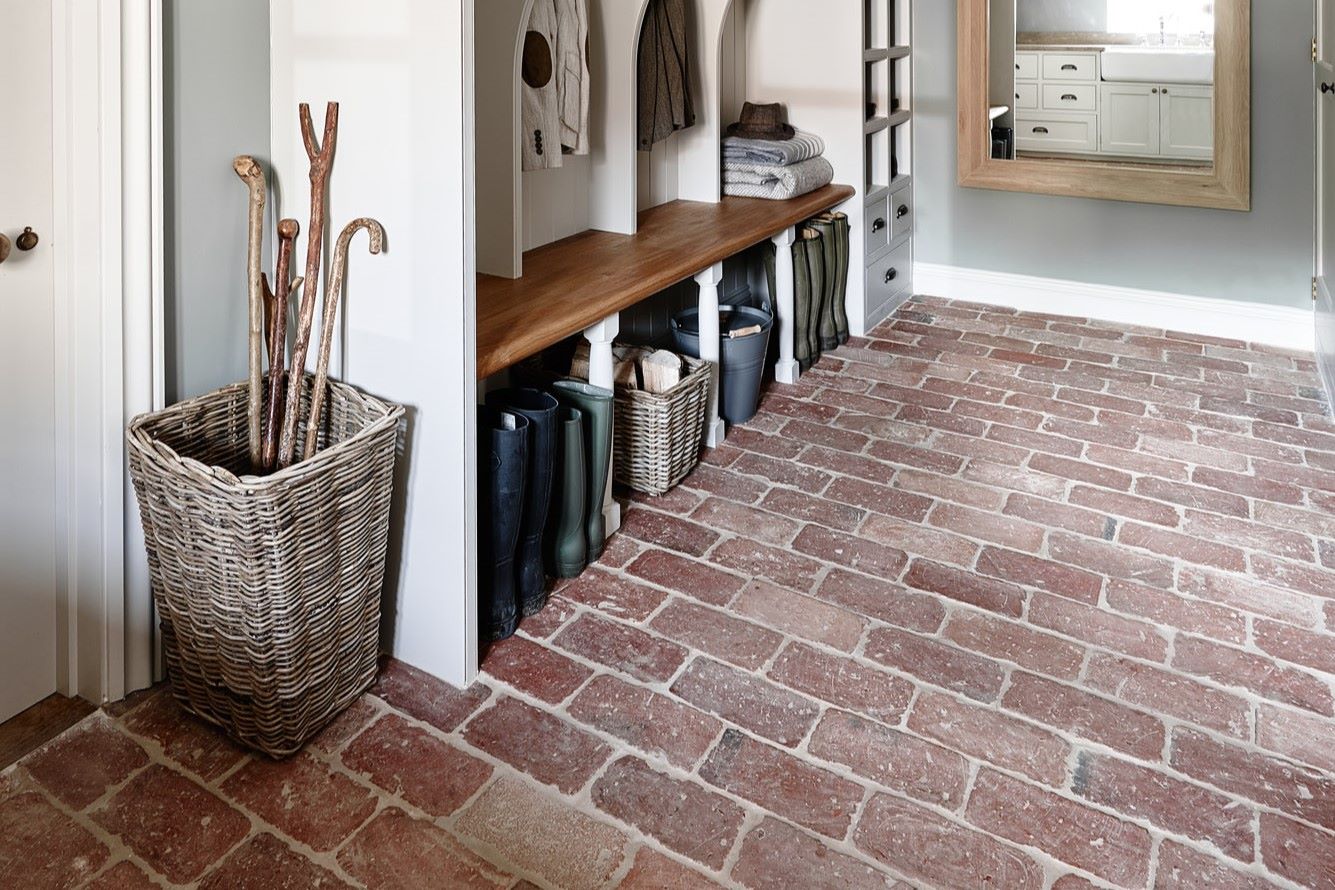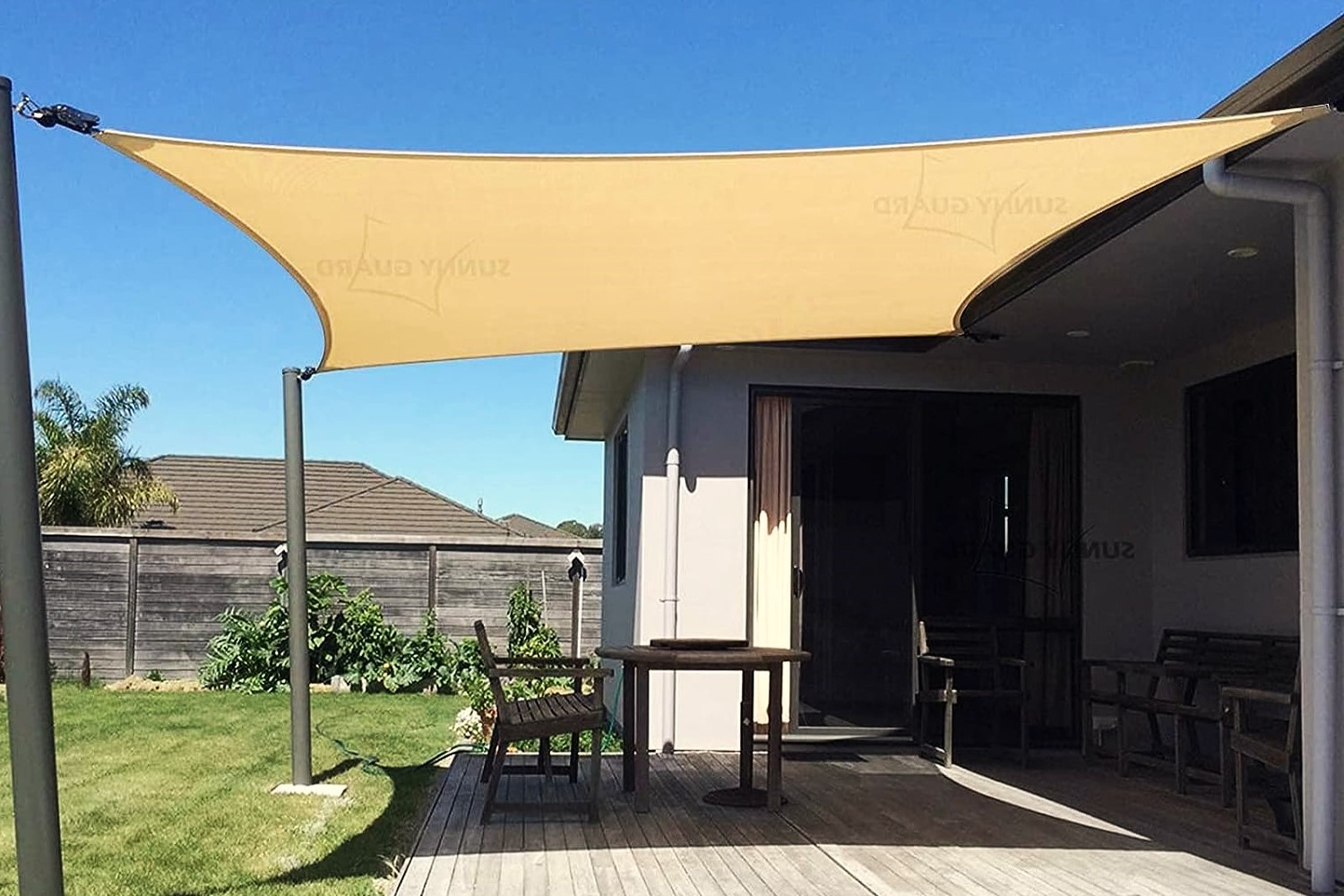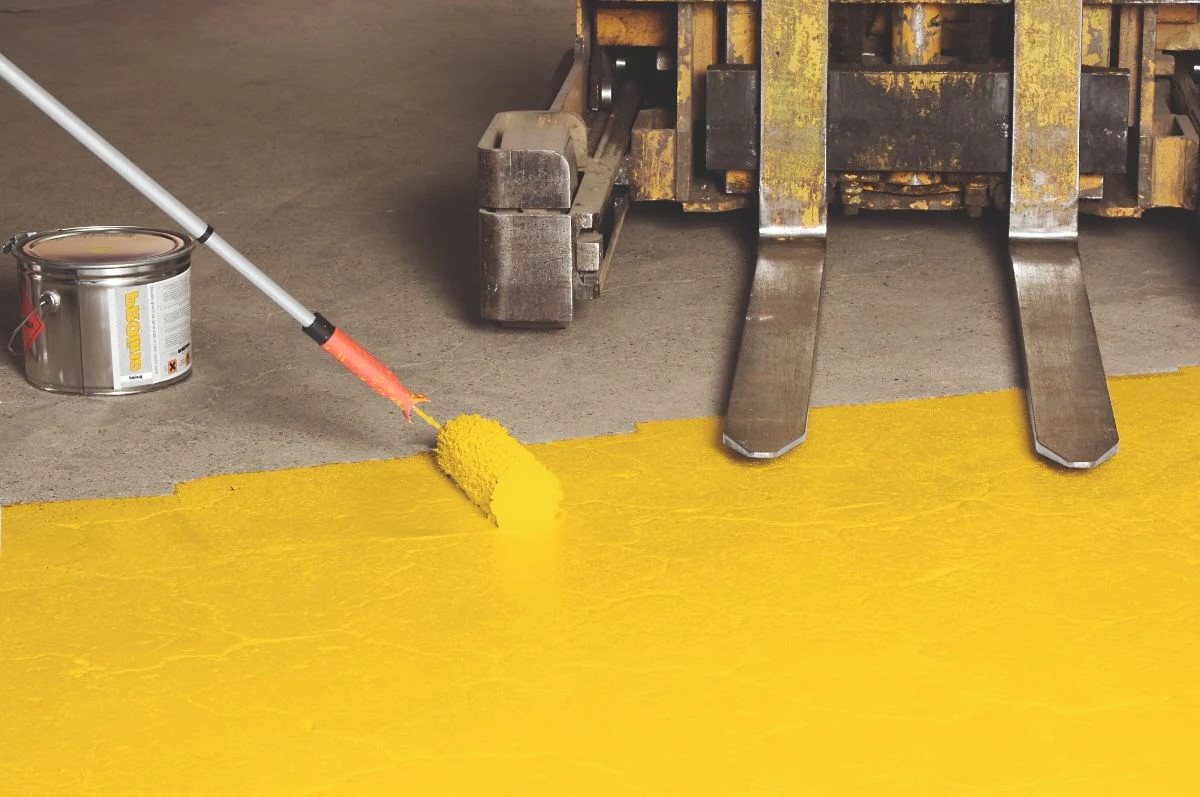Home>Ideas and Tips>Backyard Flagstone Patio Installation Durable Outdoor Flooring


Ideas and Tips
Backyard Flagstone Patio Installation Durable Outdoor Flooring
Modified: October 28, 2024
Learn how to install a durable and beautiful flagstone patio in your backyard with our step-by-step guide. Perfect for dining, lounging, and entertaining.
(Many of the links in this article redirect to a specific reviewed product. Your purchase of these products through affiliate links helps to generate commission for Storables.com, at no extra cost. Learn more)
Creating a flagstone patio in your backyard is a fantastic way to enhance the aesthetic appeal and functionality of your outdoor space. Flagstone patios are known for their durability, versatility, and timeless beauty. However, installing one requires careful planning and execution to ensure it lasts for years to come. In this article, we will guide you through the process of building a flagstone patio, from determining the size and shape to the final touches.
Step 1: Determine the Size and Shape of Your Desired Patio
The first step in building a flagstone patio is to determine its size and shape. This decision will depend on the space available in your backyard and the intended use of the patio. Consider how you plan to use the space—whether it will be for dining, lounging, or entertaining guests. You may also want to think about the flow of traffic and how it will integrate with other outdoor features like gardens or walkways.
Read more: What Is A Flagstone Patio
Measuring the Area
To measure the area accurately, start by marking out the dimensions of your desired patio using stakes and string. Ensure that you leave enough space around the edges for a border or edging material if needed. It's also important to consider any obstructions such as trees, gardens, or existing structures.
Planning for Drainage
One crucial aspect of patio design is drainage. You want to ensure that water can flow freely off the surface without pooling or causing erosion. A slight slope (about 1 inch per 4 feet) is recommended to direct water away from the house and other structures.
Step 2: Mark Out the Area
Once you have determined the size and shape of your patio, mark out the area approximately 1 foot larger than desired. This extra space will help you account for any irregularities in the flagstones and ensure that you have enough material for a neat and even finish.
Using Stakes and String
Use stakes to mark out the corners of your patio and string to define the edges. This will give you a clear visual representation of your design and help you make any necessary adjustments before proceeding.
Read more: How To Grout Flagstone Patio
Step 3: Remove Grass and Soil
The next step is to remove the grass and soil within the marked area. This can be done using a shovel or a mechanical digger, depending on the size of your project. Be sure to remove all vegetation down to a depth of about 6-8 inches to create a stable base for your patio.
Preparing the Subgrade
After removing the grass and soil, inspect the subgrade (the layer beneath your patio) for any debris or unevenness. If necessary, level out the subgrade using a rake or trowel to create a smooth surface.
Step 4: Install Geotextile Fabric
Geotextile fabric is a non-woven material that prevents the migration of rock into the subgrade and subbase layers. It acts as a barrier between these layers, ensuring that they remain separate and stable. This fabric is particularly useful in preventing weeds from growing up through your patio.
Choosing the Right Fabric
When selecting geotextile fabric, look for a non-woven material specifically designed for landscaping applications. This type of fabric is durable enough to withstand heavy loads and weather conditions while allowing water to pass through.
Step 5: Install Sub-Base Gravel
The sub-base layer consists of clean, compacted gravel that provides a stable base for your patio. This layer should be about 4-5 inches deep and spread evenly across the marked area.
Compacting the Gravel
Use a plate compactor or hand tamper to compact the gravel thoroughly. This ensures that it forms a solid base that can support the weight of both the flagstones and any furniture or foot traffic.
Step 6: Install Base Gravel
The base gravel layer is typically 3/4 inch in size and serves as an intermediary layer between the sub-base and bedding gravel. It helps distribute weight evenly and prevents settling or shifting of the flagstones.
Spreading and Compacting Base Gravel
Spread the base gravel evenly across the sub-base layer using a rake or shovel. Compact it using a plate compactor or hand tamper until it forms a solid surface.
Read more: How To Repair A Flagstone Patio
Step 7: Install Bedding Gravel
The bedding gravel layer is usually 1/2 inch in size and serves as a cushioning layer between the base gravel and flagstones. It helps prevent direct contact between these two materials, which can cause uneven settling or cracking.
Spreading and Compacting Bedding Gravel
Spread the bedding gravel evenly across the base gravel layer using a rake or shovel. Compact it using a plate compactor or hand tamper until it forms a smooth surface.
Step 8: Install Flagstone
Flagstone installation begins with laying down the largest pieces first. This ensures that you have enough space to fit smaller stones around them without leaving gaps.
Laying Down Large Flagstones
Start by placing your largest flagstones along the perimeter of your patio or in areas where they will be most visible. Use sand or mortar to secure them in place temporarily while you continue laying down smaller stones.
Fitting Smaller Flagstones
Once you have laid down your largest flagstones, begin fitting smaller ones into any gaps between them. Use a level to ensure that each stone is level and plumb before securing it with sand or mortar.
Cutting and Trimming Flagstones
If necessary, cut and trim flagstones to fit into smaller spaces or around obstructions like trees or garden beds. Use a wet saw or tile cutter for this purpose.
Step 9: Clean and Finish the Patio
After installing all flagstones, clean the patio thoroughly to remove any debris or dust that may have accumulated during installation.
Applying Joint Sand
Apply joint sand between each flagstone to fill any gaps and prevent weeds from growing up through them. Use a broom or brush to spread the sand evenly across the surface.
Sealing the Patio (Optional)
If desired, apply a sealant to protect your flagstone patio from stains and weather damage. Choose a sealant specifically designed for natural stone surfaces and follow manufacturer instructions for application.
Step 10: Final Touches
Once you have completed all steps above, take a moment to admire your handiwork Clean up any remaining materials and take pride in knowing that you have created a beautiful and durable outdoor space.
Enjoying Your New Patio
Invite family and friends over to enjoy your new flagstone patio. With proper maintenance, it will remain a stunning centerpiece of your backyard for years to come.
Conclusion
Building a flagstone patio is a rewarding project that requires careful planning but yields beautiful results. By following these steps—determining size and shape, marking out the area, removing grass and soil, installing geotextile fabric, sub-base gravel, base gravel, bedding gravel—and finally laying down flagstones—you can create an outdoor space that is both functional and aesthetically pleasing. Remember always to follow safety guidelines when working with power tools or heavy materials, and don't hesitate to seek professional help if needed.
Read more: Backyard Patio Transformation
Additional Tips:
- Drainage: Ensure that your patio has adequate drainage by sloping it slightly (about 1 inch per 4 feet) away from your house.
- Maintenance: Regularly clean your patio with mild detergent and water to prevent dirt buildup. Seal it periodically as recommended by the manufacturer.
- Material Selection: Choose high-quality flagstones that are suitable for outdoor use. Consider factors like color variation, texture, and durability when selecting materials.
- Local Regulations: Check local building codes or regulations before starting your project to ensure compliance with any specific requirements.
By following these guidelines and tips, you'll be well on your way to creating a stunning flagstone patio that enhances both the beauty and functionality of your backyard space.
Was this page helpful?
At Storables.com, we guarantee accurate and reliable information. Our content, validated by Expert Board Contributors, is crafted following stringent Editorial Policies. We're committed to providing you with well-researched, expert-backed insights for all your informational needs.










0 thoughts on “Backyard Flagstone Patio Installation Durable Outdoor Flooring”